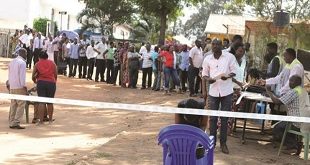In 1981, Museveni and the core of his fighters who went to Luwero were left wing Marxist ideologues. Yet to prosecute the war among Baganda peasants, he secured an alliance with former president Yusuf Lule, a conservative Muganda monarchist. Lule became the leader of the National Resistance Movement (NRM), Museveni his deputy. Museveni also allied with the royal families of Ankole, Toro and Buganda, all of whom were conservative traditional constituencies whose ideological beliefs and interests were at odds with NRA’s Marxist ideals.
Furthermore, Museveni established an alliance with Baganda business-interests who were largely Muslim. Here class interests were tied to a religious identity. To this cocktail of conflicting ideological allies, he built a strong alliance with Baganda and Banyankore peasants and Banyarwanda refugees. How he kept such a diverse coalition of conflicting identities, ideologies and interests together under waves of military assault and political infiltration is a story that is beyond the scope and space of this article. We shall deal with it another time.
What is important for now is that even in the face of military assault from and intelligence infiltration from the UNLA, Museveni did not lose sight of the necessity of a broad coalition. He recognised that only that could give him a chance to gain power. Even when he captured power, he got all the different political forces at play – political parties, ideological factions, ethnic and religious identities, business interests (both national and international) into what he called a “broad-based” government. It is this broad coalition that allowed him to consolidate power.
For Museveni to achieve this feat, he has had to make many compromises. Yet because many of his actions conflicted with the ideological ideals of his core-fighting group or with the identities of his allies, he had to gain control of his comrades and direct them to his overall goal. In other words, he did not allow his group to lead him. He led them. They had to accept his judgment, his compromises and his calculations. Yet he did not do this by diktat.
This brings us to the internal organisation of the NRA, which was really the main influence in the bush. The NRM was still nascent, with a shaky political base. Museveni established deliberative bodies like the army council, the high command, the National Resistance Council and the Resistance Councils at lower levels. These bodies were presented as institutions for consultations. Yet Museveni’s aim was to use them to rubber stamp his ideas and decisions and therefore present these as a result of wide consultation.
Thus even today, Museveni has CEC, NEC, parliament and other institutions through which he pushes his policies, ideas and interests. These institutions do not design or originate policies. Museveni does. Their aim is to legitimise his decisions by making them appear as results of deliberation, consultation and debate. In practice, they allow him to listen to the feelings of others, weigh the diversity of opinion, the hostility or consent of major groups to certain policies etc. It is on this basis that he makes the necessary compromises and gives concessions without losing his overall aim.
Yet these are the very things that opposition in Uganda hate. FDC under Kizza Besigye faced this challenge and insisted on a very narrow ideological position where supporters were required to conform. Any slight deviation from the script meant the holder of such a view was a mole, compromised by Museveni and therefore must be purged from the ranks. Under such strict rules, FDC disintegrated. NUP has been launched on this path of self-destruction.
****
 The Independent Uganda: You get the Truth we Pay the Price
The Independent Uganda: You get the Truth we Pay the Price


